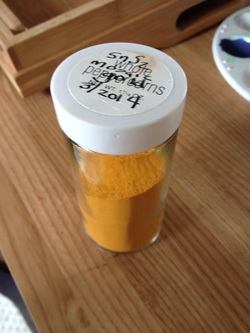
So a bunch of us went in on this purchase and I received 80 grams of the SnS2 to experiment with it. I divided 80 grams in half to give to a friend in the north (Hi, Camille) to further our artistic mischief. I put the mosaic gold into a nice, dry, class jar with a cover, labeled it and EVERYTHING. How exciting!
So over the next month, I was stupidly busy. I didn't have a lot of time to be able to experiment. During April vacation I actually had time so I took the pigment and added some gum arabic (a few drops) as the binder to temper the color, plus a little water to make it flow and painted some test swatches.
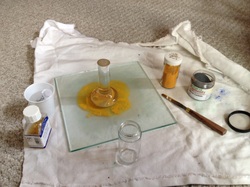
I did use the mosaic gold on a current project that I am doing. Can't show it yet, but the moment that I can, you will see it here. I will note that the mosaic gold does have a nice shine when it dries and when it is right up next to a combination of cinnabar and lapis lazuli (also ground from pigment), it makes a lovely contrast. I'm pretty happy so far with the results.
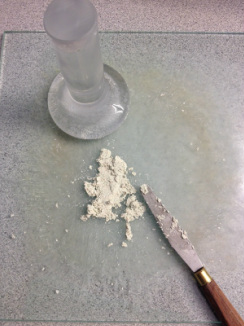
Another teacher at work has chickens and had extra eggs so I received them on Friday. Saturday morning, fresh eggs for breakfast and I kept one of the white shells to try out the grinding. I have discovered that there is a technique to the grinding and I am getting better at it. I grind the pigment, then I scoop it back together in a mound with a painters blade and then grind again. Repeat several times. Some things that I learned: I think I needed to leave the egg out to really dry out as the grinding seemed to have too much moisture to it. Also, I read after I did this, that you need to add the binder in and grind it. That will happen next. I have put the finished product in a container and may let it dry again and then re-try grinding with the binder to see if I can get a finer grind. I could use the resulting chalk to paint grounds, but would have to add lime (calcium hydroxide) in order to make it Lime White, which would have been used in period. Lime also has its hazards, so I'll have to look into that.
"Pigments through the Ages - Detailed Pigment Histories, Recipes." Pigments through the Ages - Detailed Pigment Histories, Recipes. N.p., n.d. Web. 03 May 2014.
Cennini, Cennino, and Daniel V. Thompson. The Craftsman's Handbook. New York: Dover Pubications, 1954. Print.
"Randy Asplund Illustration Home." Randy Asplund Illustration Home. N.p., n.d. Web. 03 May 2014.
"Why Natural Pigments?" Natural Pigments. N.p., n.d. Web. 03 May 2014.
"Hand Grinding and the Purchase of Materials." Basic Three-Bar Template. N.p., n.d. Web. 03 May 2014.
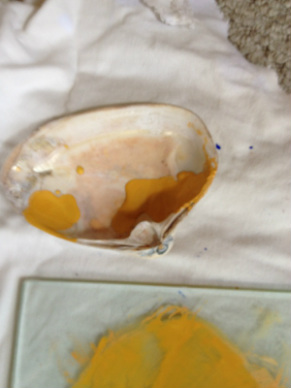
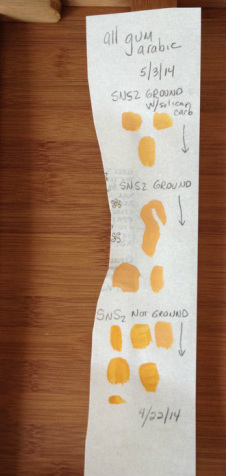
 RSS Feed
RSS Feed
